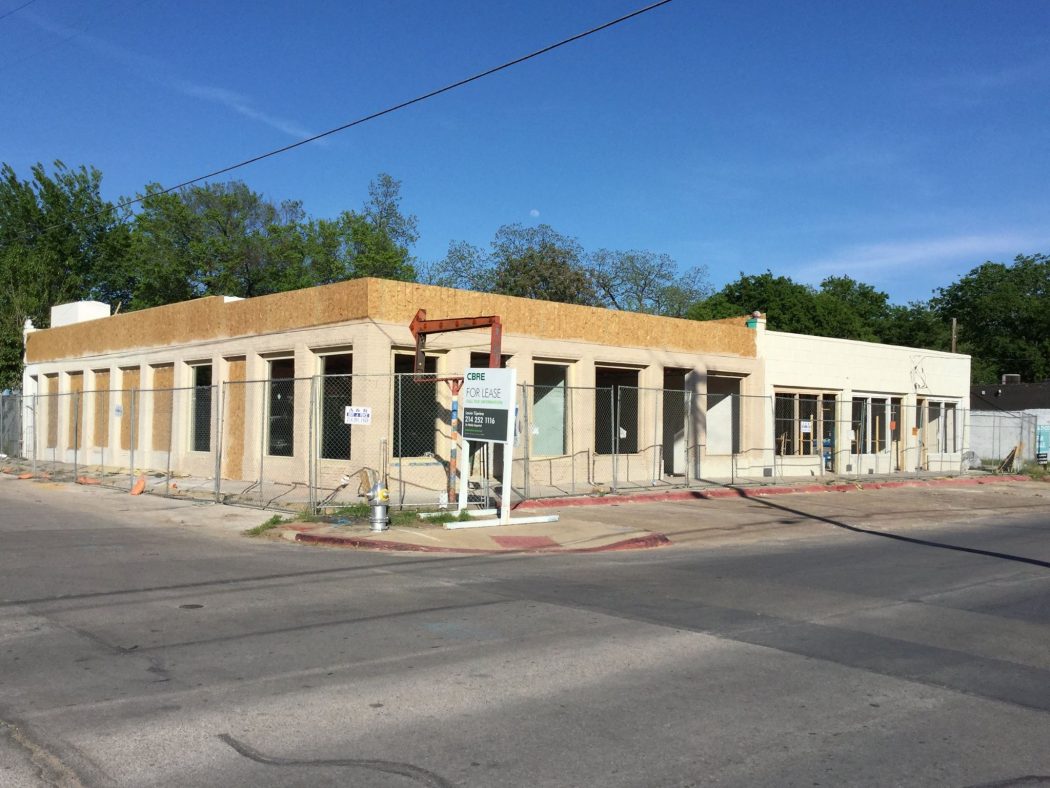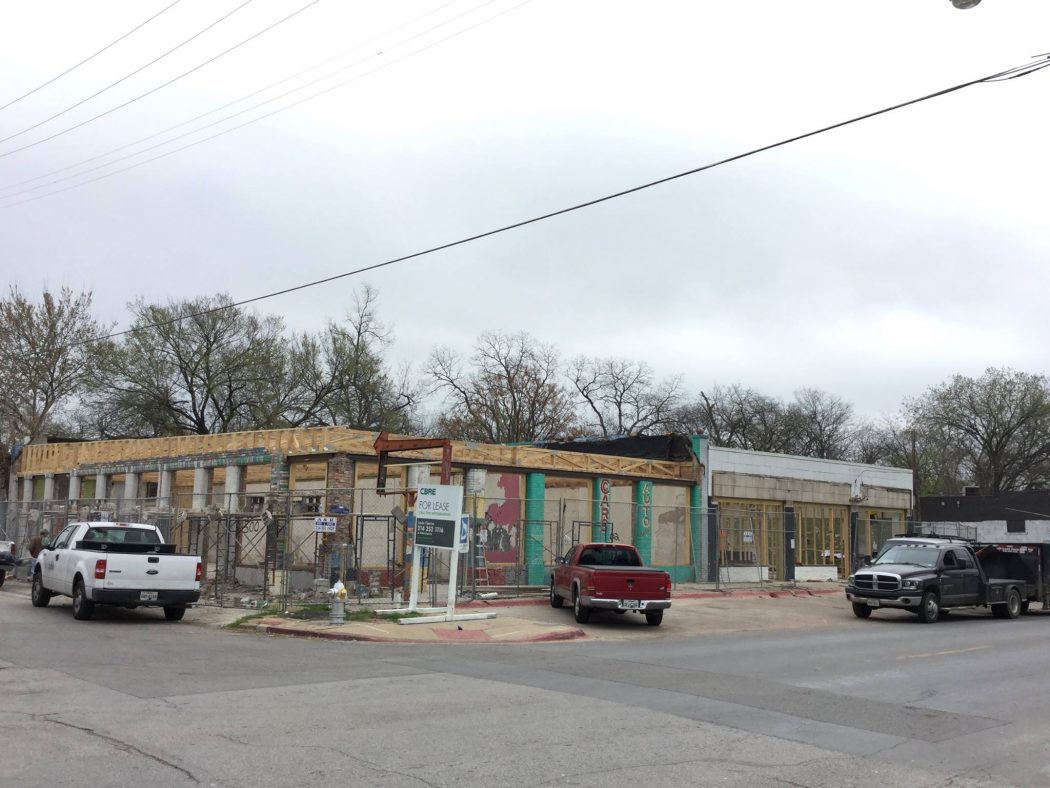
Barrett Urban Development has worked to restore the buildings at 500 Fitzhugh.
There was once a time, from the 1920s to ‘60s, when neighborhoods had small commercial districts dotted between blocks. Well, district might be too strong a word. Really, it was just a small series of shops, like an mini strip mall, but usually way cuter than today’s commercial hubs.
Peak’s Addition neighbor Nathaniel Barrett is looking to return that style in Old East Dallas with his restoration of a strip of commercial buildings in the 500 block of Fitzhugh.
“I live really close to here,” Barrett says standing in front of the original 1926 brick. “I really wanted to invest in the area I live in.”
A CPA by trade, Barrett got interested in urban planning and development, specifically through the prism of restoration. He learned from experts like Oak Cliff developer Monte Anderson, and eventually launched Barrett Urban Development. The boutique firm will specialize in small-scale projects such as the Fitzhugh property, with a focus on restoring and revitalizing rather than replacing.
“As a small developer you’re constrained by means,” he says, adding that he is not interested in building new construction. “East Dallas has so many buildings that are restorable, why would you tear them down?”

The building as it looked when Nathaniel Barrett bought it last year.
Built in 1926, the commercial corner at Fitzhugh and Terry began with a pharmacy. Twenty years later, a hair salon was added next door. While it’s technically two 3,700-square-foot buildings, the space has been sectioned into a variety of configurations over the years. Barrett has it split into five commercial spaces, but can take down a wall or two if a tenant wants more room.
It’s been a long process, the property needed everything from a new roof to new plumbing to new electrical.
“These buildings have been for sale for a long time, and when I bought them, I found out why,” he laughs. “The only things I did not replace was the foundation, some of the floors and the original trusses.”
And, of course, the brick exterior or the old fashioned arrow sign post. He did have one “architectural tragedy,” as he calls it, when the original gable peaks on the 1926 building crumbled from years of water exposure when the roof was replaced.
“There just wasn’t enough to save,” Barrett says, dejected.
After launching in September, the project is now nearing completion. He doesn’t have any tenants signed on yet, but there is a donut shop interested in one of the buildings. He hopes to attract businesses that neighbors would walk to, like a nail salon or hair stylist, reminiscent of the original uses of the shop.
“I think these neighbors would love a donut shop or something nearby in their neighborhood,” he says. “I know I would.”
Once this project is fully occupied, he’ll move on to his next restoration. “We’re small, it’ll be one project at a time,” he says.





